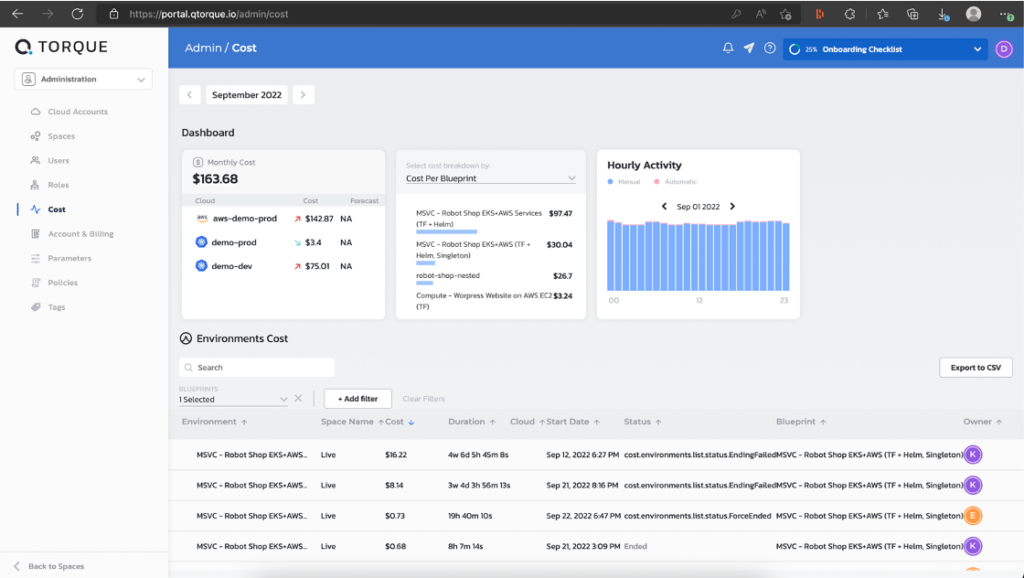Quali Simplifies Provisioning of Kubernetes Clusters
At the KubeCon + CloudNativeCon North America conference, Quali today announced its Torque platform for managing infrastructure-as-code (IaC) has added the ability to detect drift in the Helm Charts used to configure Kubernetes clusters.
The company has also enhanced its cost reporting capabilities to include automatic cost collection for Kubernetes hosts at a time when many organizations are trying to cope with major economic challenges.
Quali previously supported open source Terraform tools, but with the addition of support for Helm Charts, the Torque platform can now support a tool commonly used to provision infrastructure used to deploy cloud-native applications. The company is also extending its support for Terraform to import existing Terraform definitions that IT teams might already be using to provision, for example, cloud infrastructure resources.
In addition, via a single pane of glass, the Torque platform now lists all elements that make up an environment blueprint definition pulled from a Git repository, including visibility into all subcomponents of environment definitions.
Finally, all data collected by Torque can be imported into third-party audit tools to better enforce compliance policies.
David Williams, senior vice president of market strategy for Quali, says Torque is designed to make it simpler for IT administrators to programmatically manage IT infrastructure via a set of graphical tools. Rather than having to master multiple programming tools, Williams said the Torque platform makes it possible for IT administrators to pivot between platforms they are being asked to provision without having to master the nuances of multiple lower-level programming tools. Torque effectively normalizes the files used to provision multiple types of IT infrastructure in a way that is integrated with continuous integration/continuous delivery (CI/CD) platforms, he says.
Making Kubernetes more accessible is becoming a more pressing issue as the number of clusters deployed in production environments continues to rapidly increase. DevOps teams are, of course, managing many of those clusters using tools such as Terraform, but most traditional IT administrators don’t have the skills required to use those tools. Platforms such as Torque make it possible for IT administrators to collaborate with DevOps professionals to manage Kubernetes clusters alongside legacy platforms without having to directly interact with YAML files, says Williams. That approach also enables IT teams to adopt DevOps best practices at their own pace, he added.
It’s clear more organizations than ever are going to be managing fleets of Kubernetes clusters. The challenge they face is that hiring DevOps professionals to automate the management of each of those clusters can become prohibitively expensive. Given all the tasks that need to be performed to build and deploy cloud-native applications, IT administrators have a significant role to play within the context of a larger DevOps workflow.
Obviously, it may be a while before most IT organizations fully bridge that divide. However, as tools that provide a higher level of abstraction for managing IT infrastructure become more accessible, the rate at which applications can be deployed should considerably improve. The next challenge will be figuring out how best to manage all those increasingly diverse IT environments once all those applications are deployed.




